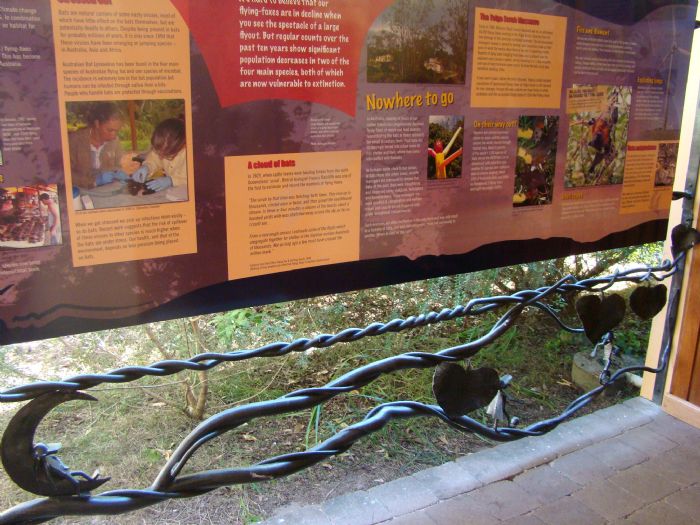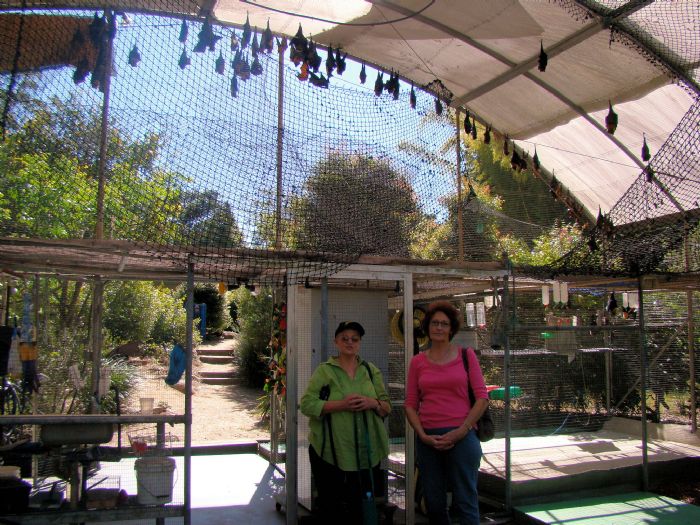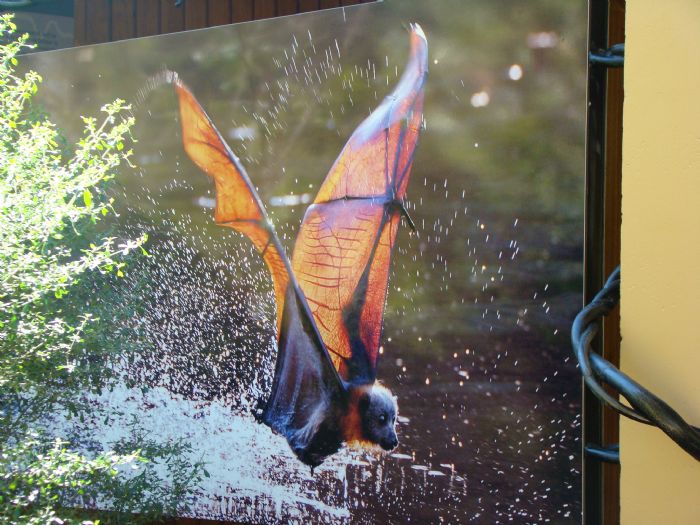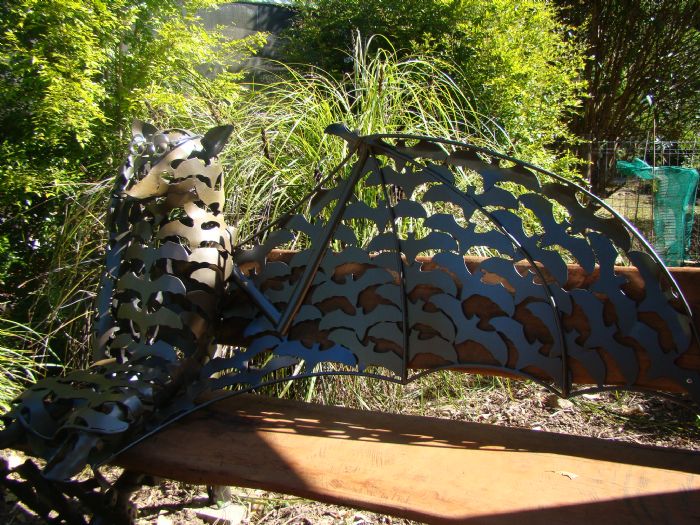Bats.... Flying Fox
Our 'other' passion is the rescue and rehabilitation of orphaned baby Flying Foxes.
We are licensed Wildlife Rehabilitation Officers specialising in Flying Foxes and have successfully hand raised
many orphaned flying fox babies and released them back into the wild over the past four years.
I would like to add that the carers in our local network are all volunteers,
who freely donate their time and money to helping the winged ones!
Should you wish to make a donation of fruit, money or your time, please ontact your local organisation.
Here are some of our success stories...
Australian Flying Foxes – The Bat Order Chiroptera has two sub orders
Megachiropterans (Megabats - big bats) and
Microchiropterans (Small bats – micro bats)
Family Chiroptera, subfamily Megachiroptera, genus Pteropus (flying-foxes)
A few bat facts:
- Fruit bats are the major pollinator for many plants. Some Australian species such as North Queensland Durian, fruit bats are the only way the Durian is pollinated and spread thoughout the rainforest.
- Flying fox are mammals and not marsupials, they do not have a pouch.
- A female flying fox is pregnant for six months.
- Flying fox babies are born well developed, with their eyes open and fully furred (except for their stomach, which is furless).
- They normally have a single baby and suckle their young at teats. The flying fox teats are positioned under their arms, in their arm pits.
- The young are carried by their mother until they are too big (at approximately 10 weeks old). They are then left behind during the night, creched in maternity camps.
Although this is not a 'nice' picture, it is reality but need not be the end result! Please read on.....
Many flying fox get caught in barbed wire fencing,
this is a slow and agonising death.....
If you come across an injured bat please DO NOT handle it! but provide some shade
over the bat and contact your local Wildlife Rescue organisation...as provided below.
Please look over the Tolga Bat Rescue and Research website. This organisation provides research scientists vaulable access to bats of all types and also provides residential schools for volunteers interested is this special animal. https://www.tolgabathospital.org/
|
Local Wildlife Rescue Organisations |
|
|
Gold Coast www.batrescue.org.au |
0447 222889 (0447 2BATTY!) |
|
Sunshine Coast |
(07) 5441 6200 |
|
Lockyer Valley |
(07) 4697 5122 |
|
Rockhampton Wildlife Rescue Association Inc, PO BOX 5888 |
0437 556 744 |
|
Calliope / Gladstone area |
4975 7612 |
|
Yeppoon - Val & Pieter |
4938 3141 |
|
Mackay - A.N.A.C.A.R.A |
4942 8144 |
|
Brisbane - O.N.A.R.R. |
3030 2245 |
|
Bundaberg - Bundaberg & District Wildlife Carers |
4159 1504 |
|
Bundaberg - Bundaberg Wildlife Rescue Service |
4155 1097 or 0427 315 658 |
|
Caboolture - Caboolture Koala Care & Rescue |
0401 080 333 |
For more rescue contacts throughout Australia and information available via these links:
- Tolga Bat Hospital http://www.tolgabathospital.org/
- Friends of the Far North Flying Foxes http://www.jeffress.net/ffnff/
- Australasian Bat Society Inc. www.abs.ausbats.org.au
Contact Details
Taryn Jones
Rockhampton, Central Queensland, 4702
Facebook: https://www.facebook.com/pages/Tooshay-Pomeranians/503745683040651
Tooshay Poms [email protected]




